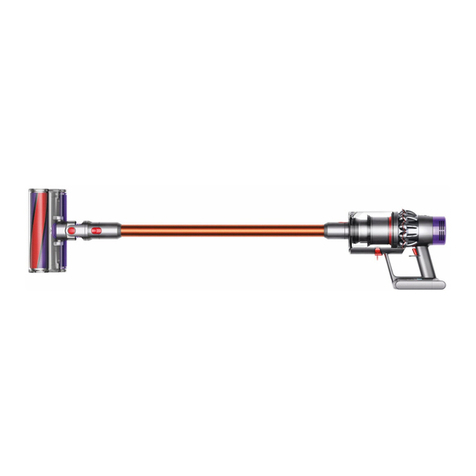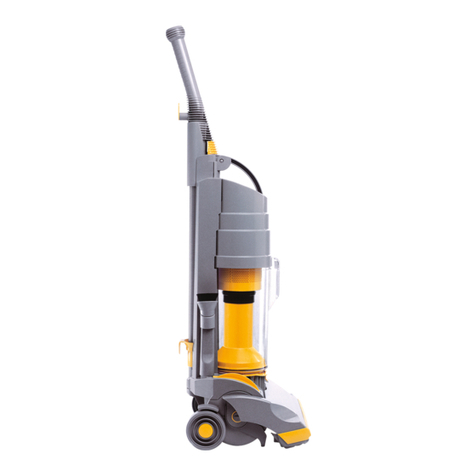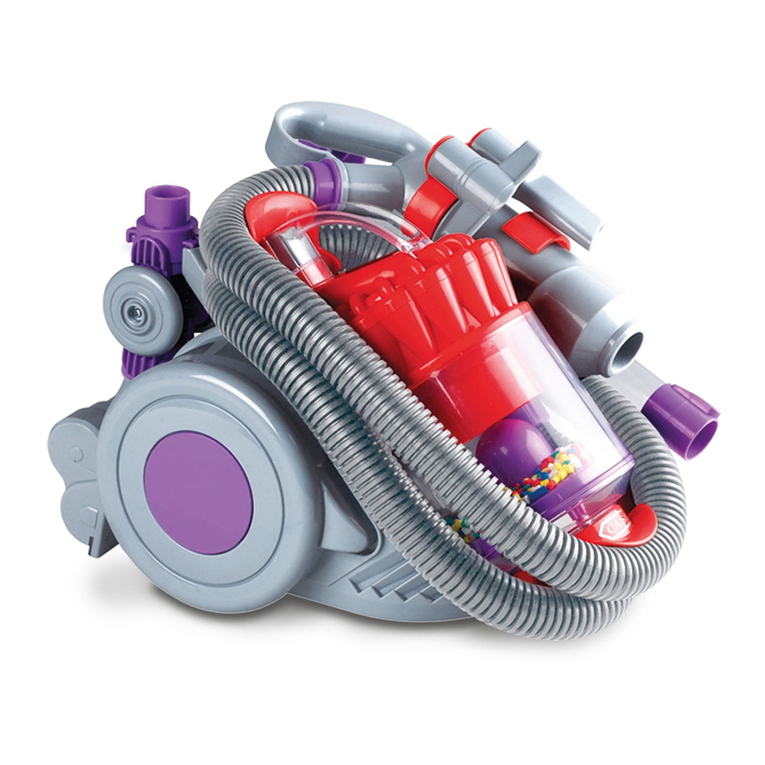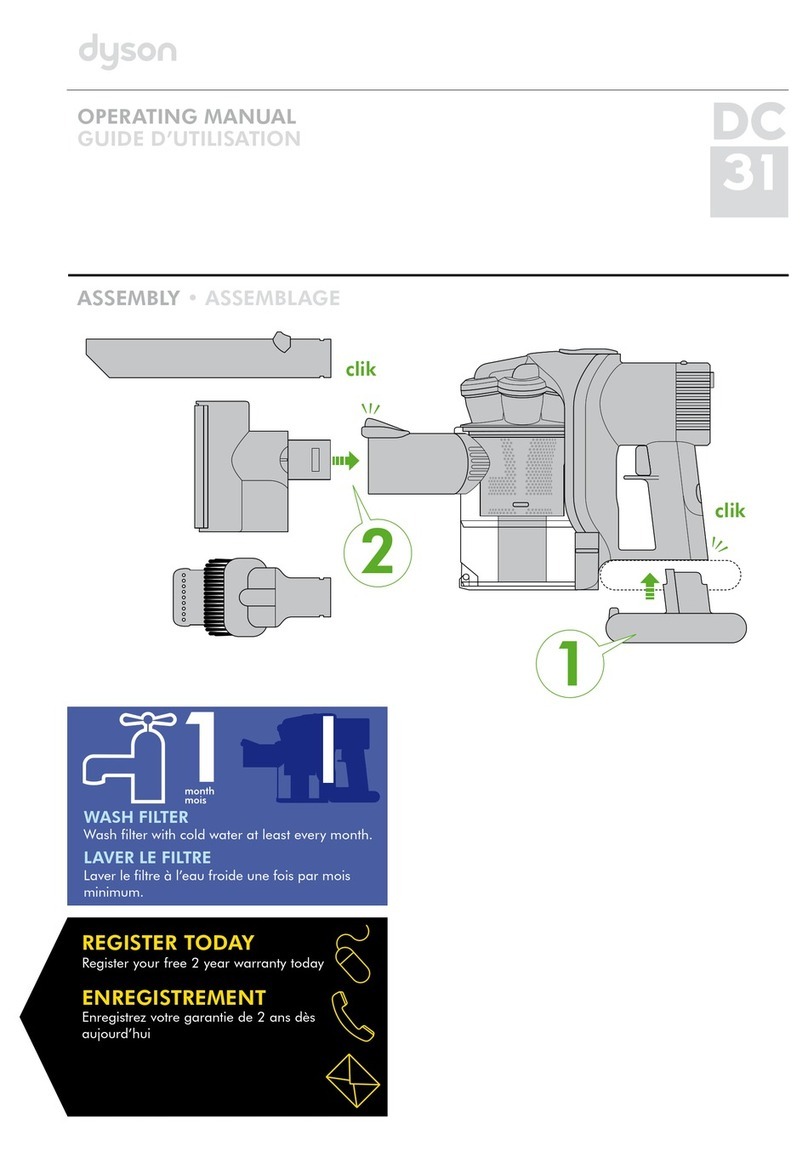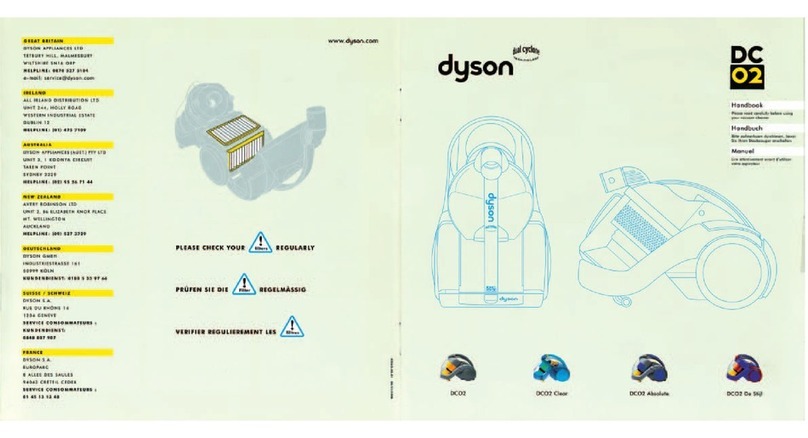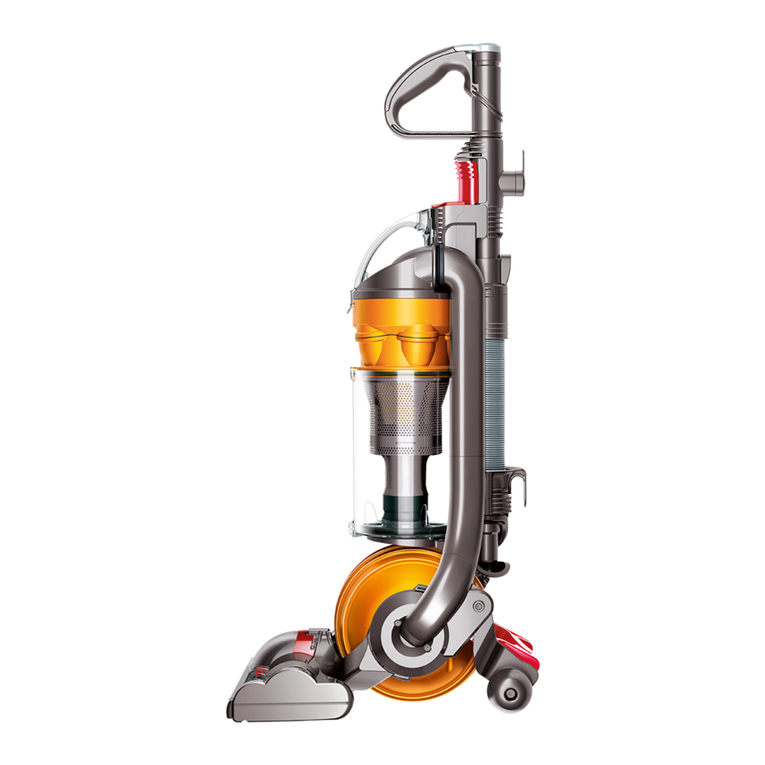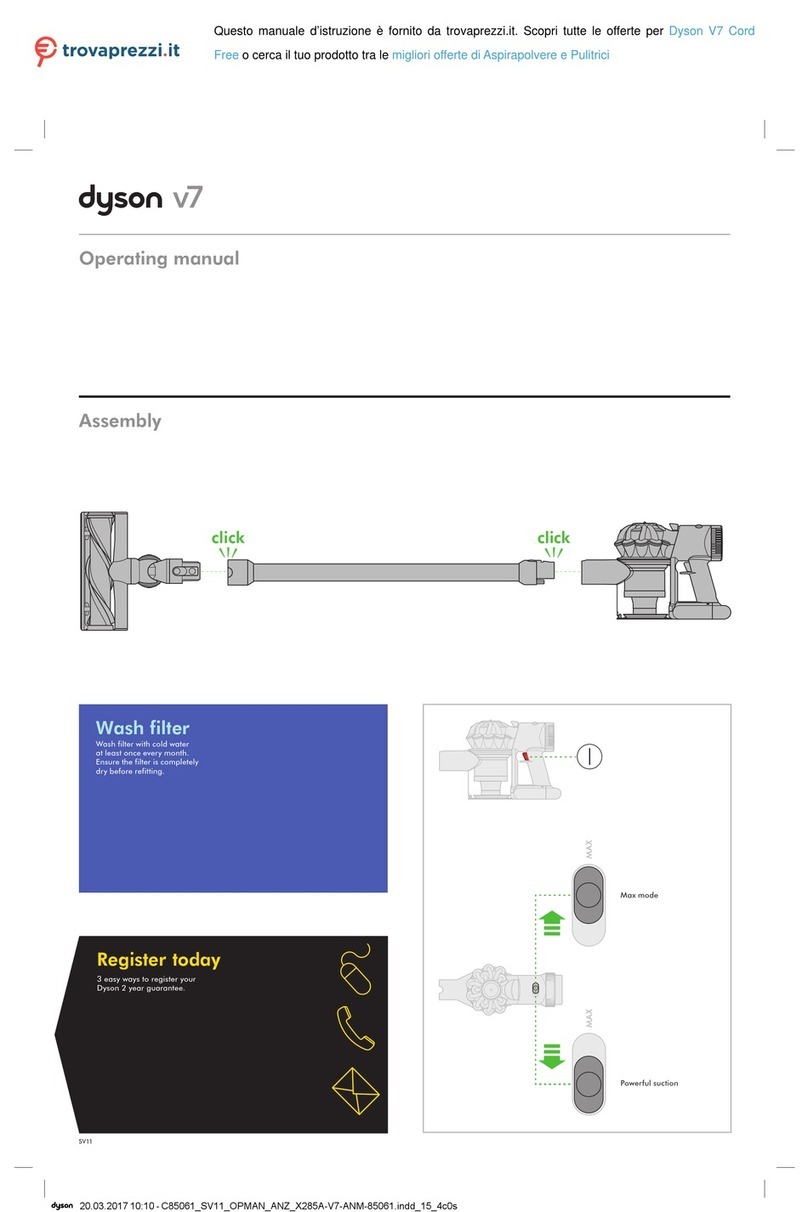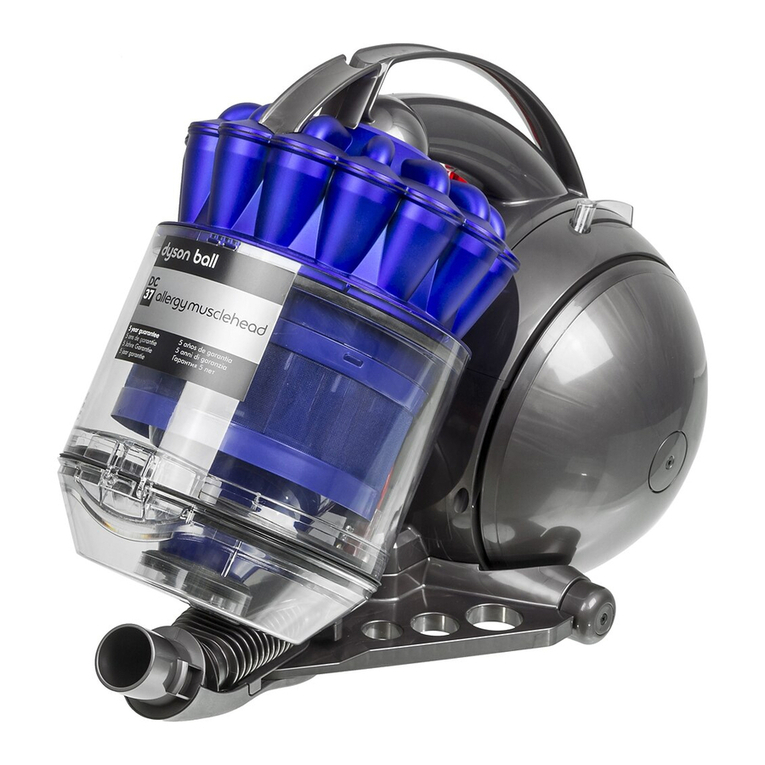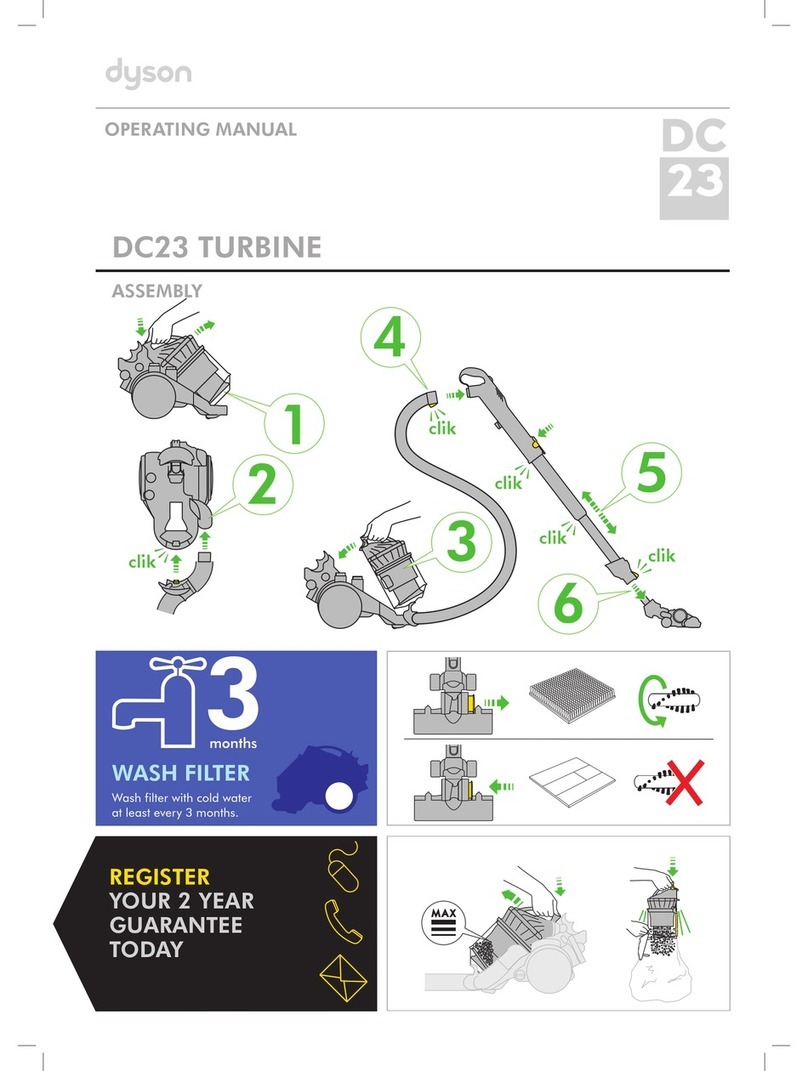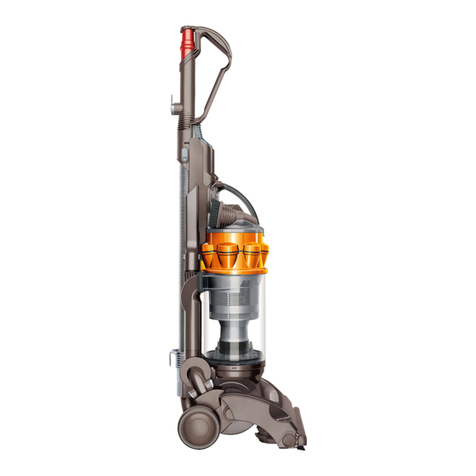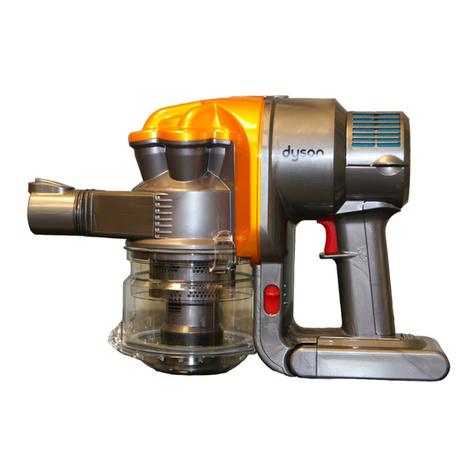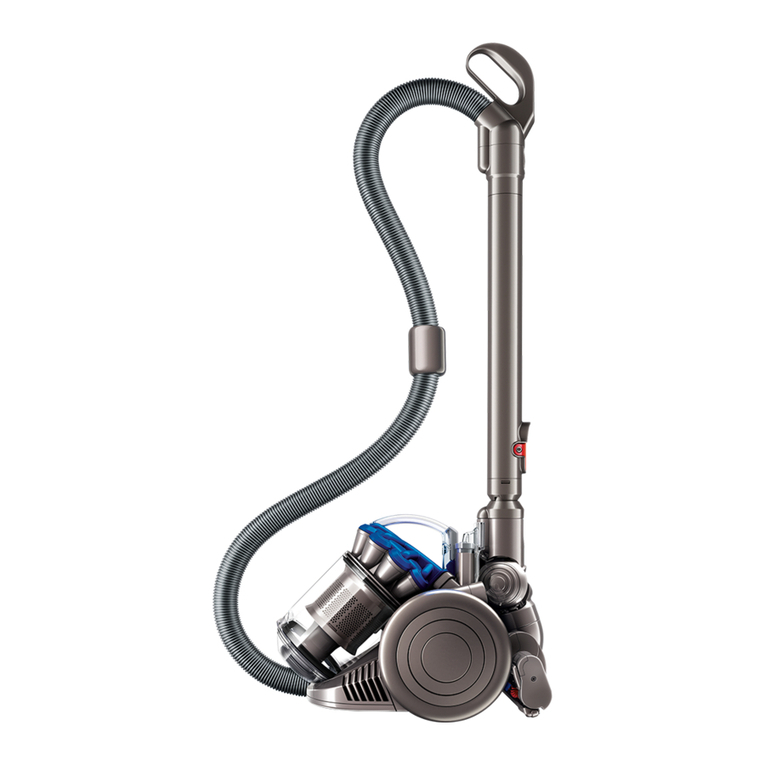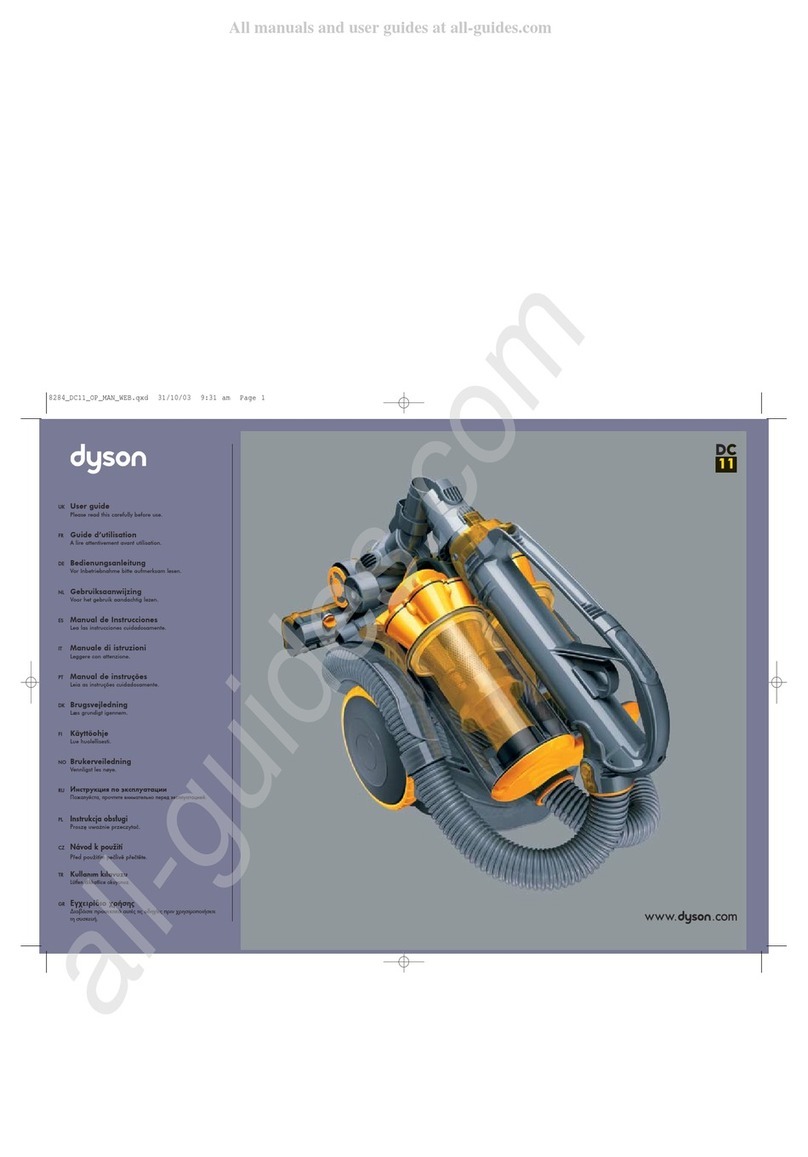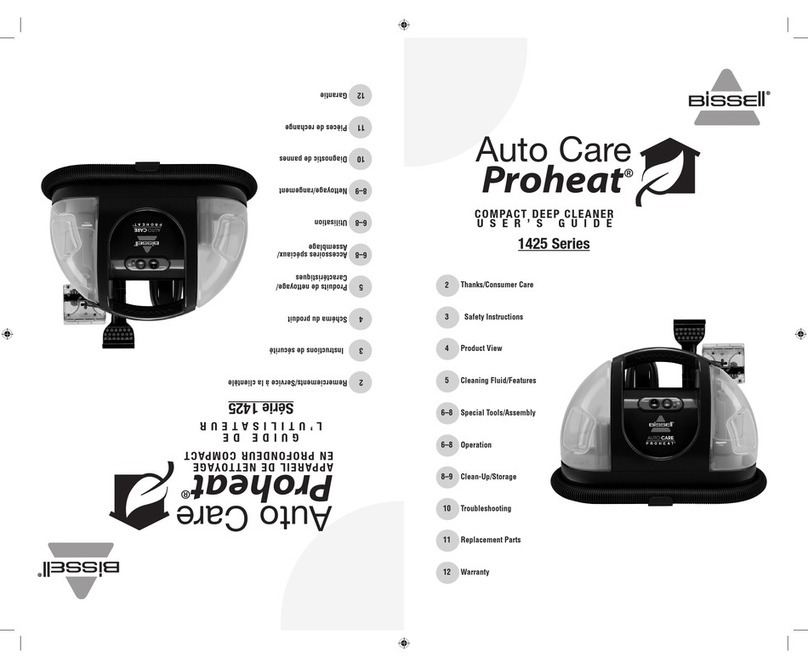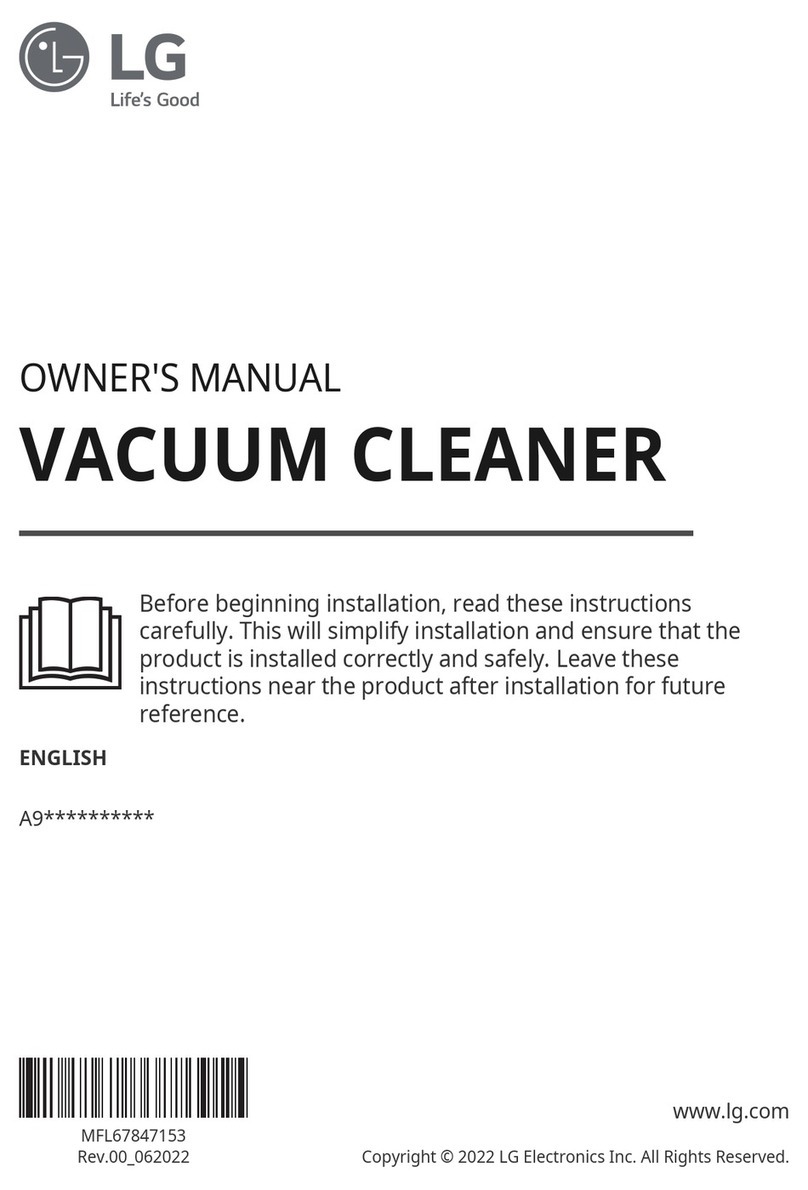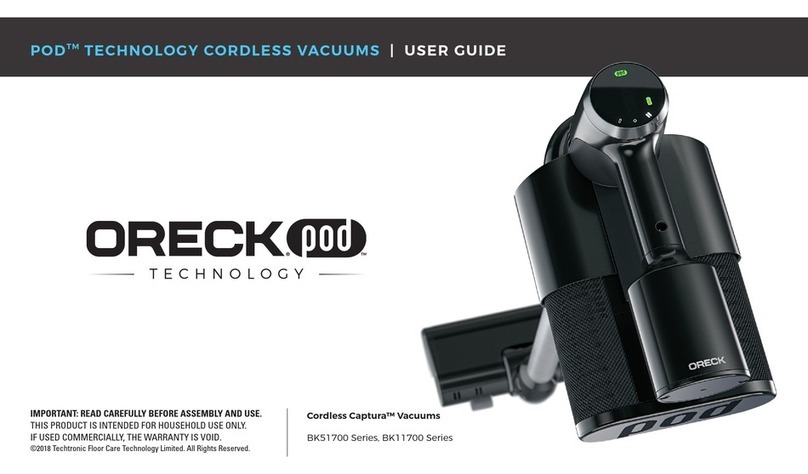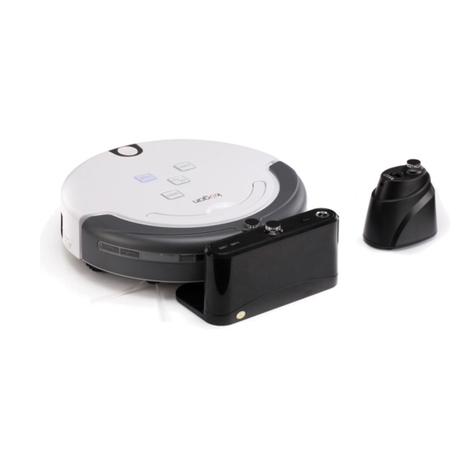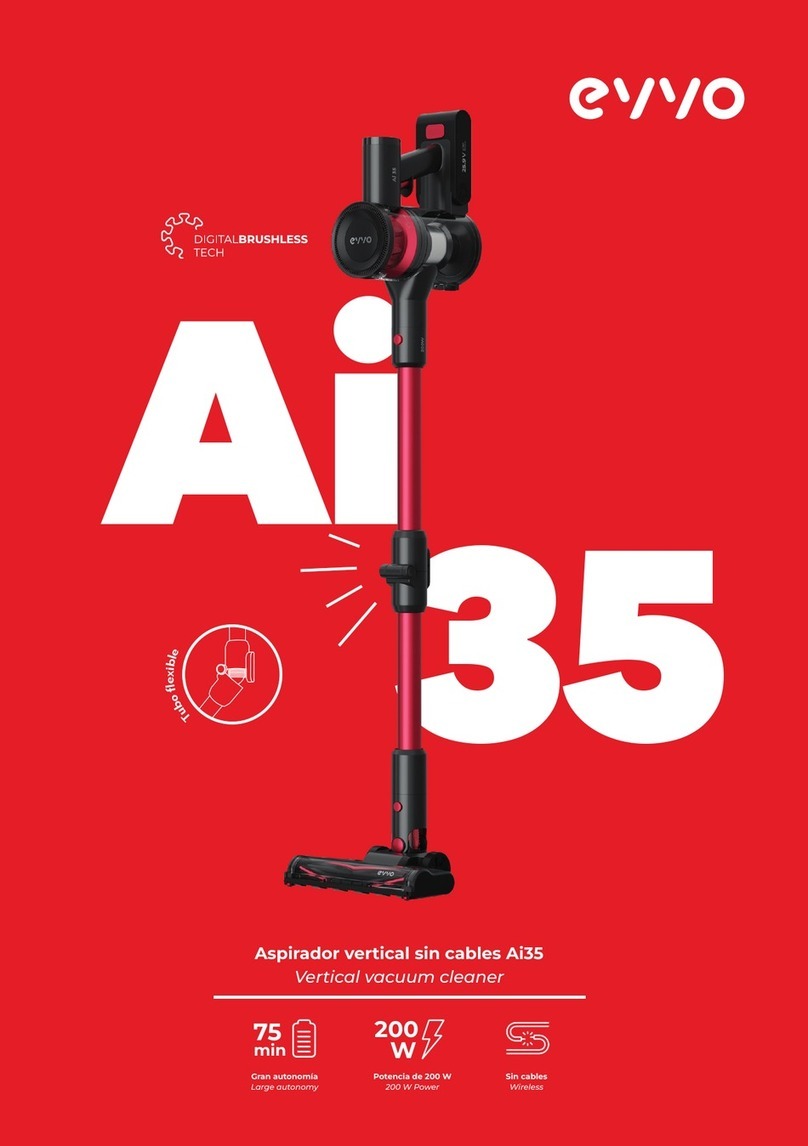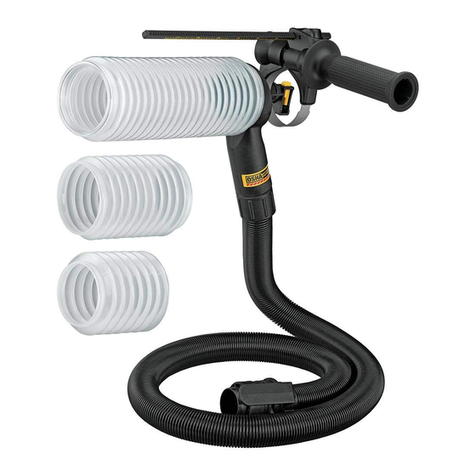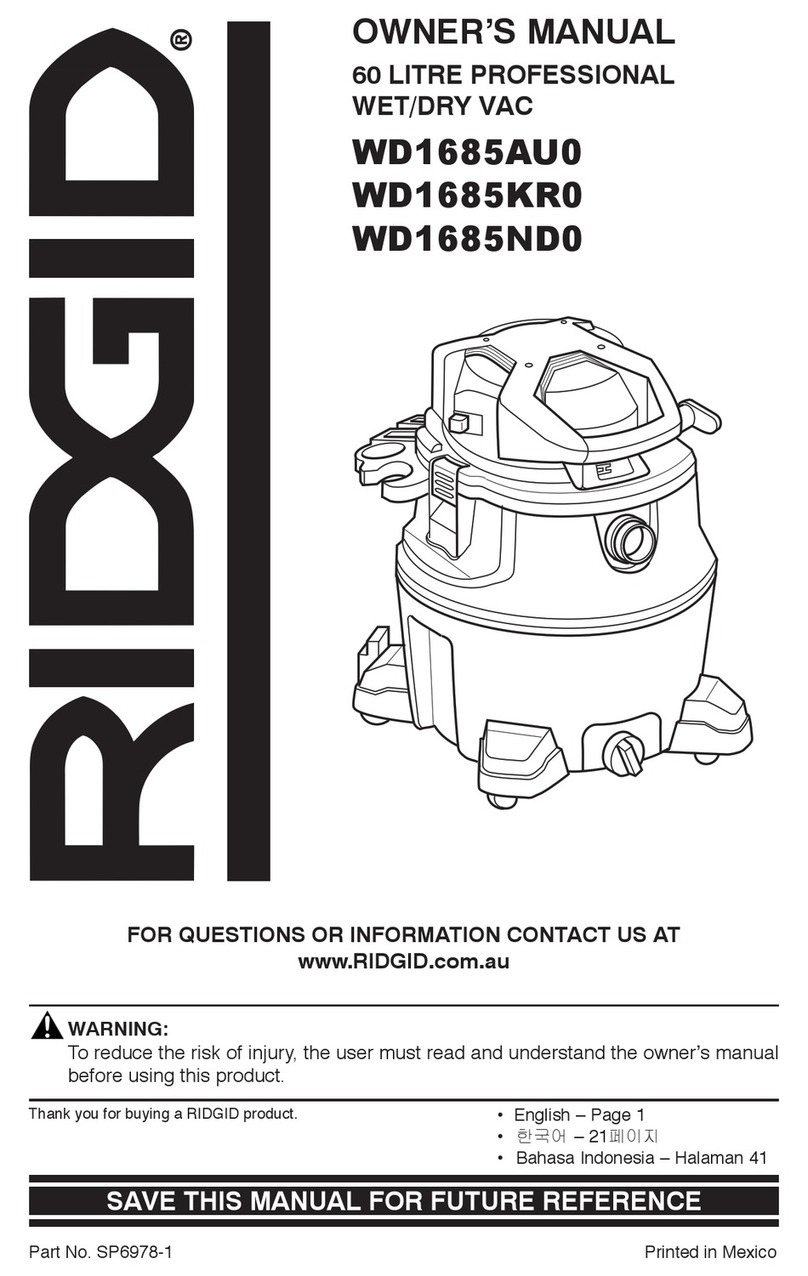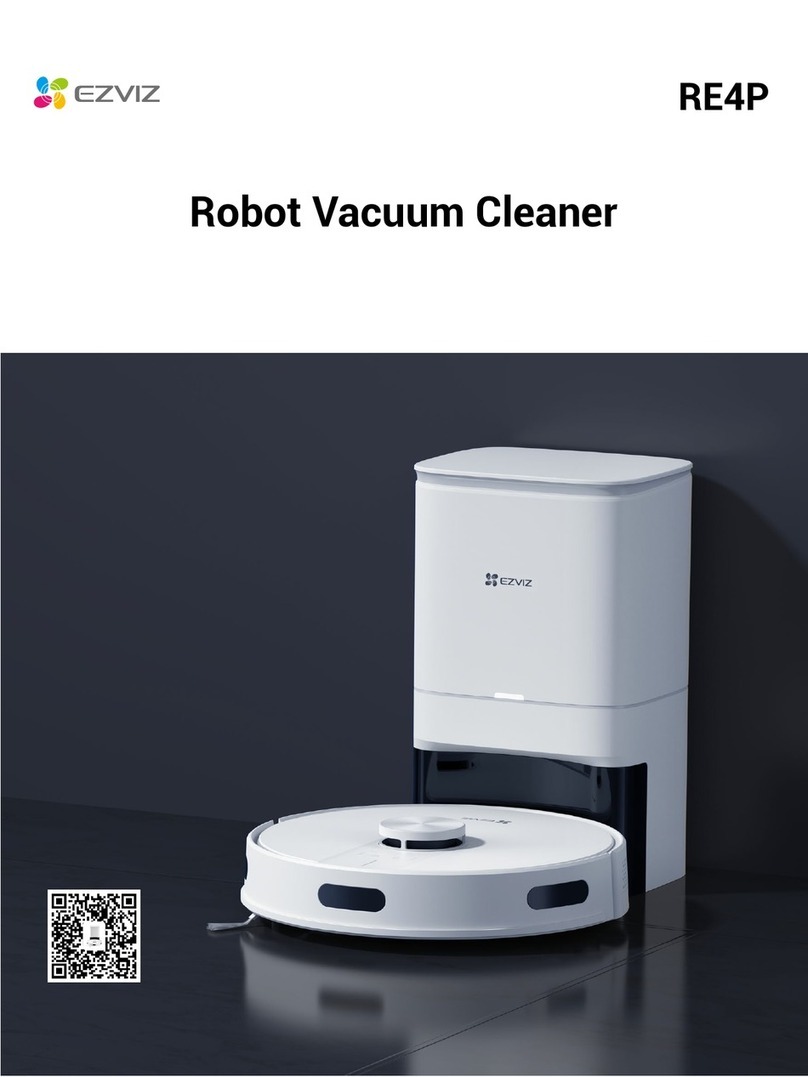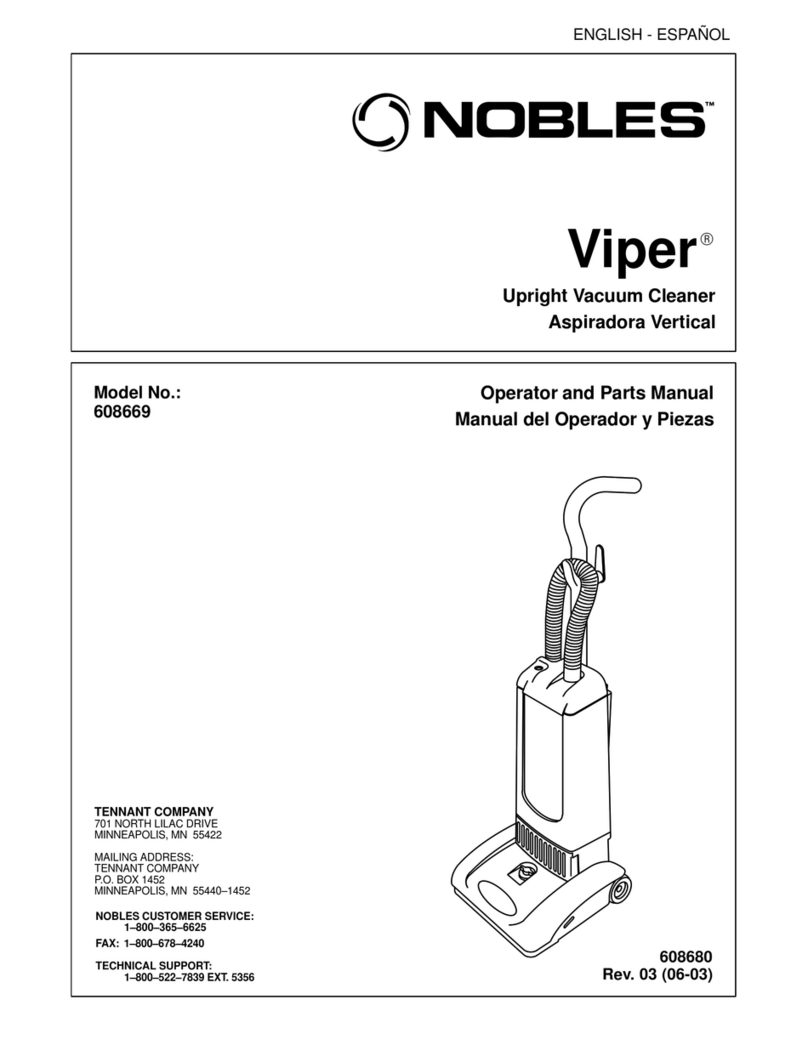
Technical info.
Service manual
04
When DC25 is switched on in the upright position, the brushbar motor is off. Tilting the machine into
normal vacuuming mode will automatically operate the upright switch, turning the brushbar motor on.
The brushbar motor can be switched off using the brushbar switch.
The vacuum motor of DC25 is fitted with a heat sensitive Thermal Cut-Out (TCO). This will shut the
motor down for up to 60 minutes if it reaches a temperature >96 degrees celcius. Excessive
temperatures within the motor are usually caused by machine/filter blockages.
The switch housing is fitted with a TCO reset switch that will shut the brushbar motor off if it is put
under an excessive load (blocked/seized brushbar etc.). The cause of the shut down should be cleared
and the TCO reset by pressing the brushbar switch button.
If the cause of the brushbar motor cut-out is not rectified the TCO will repeatedly reactivate, preventing
the brushbar from turning.
Electrical fault diaignosis
Note: all ‘connection’ numbers and ‘continuity’ checks refer to the illustration and table on page 3.
No machine power (vac motor and brushbar motor off)
1) Check for damage/electrical failure to the plug, fuse and powercord.
2) Check for a loose connection at points 1, 2 and 7.
3) Check the mechanical actuation of the on/off switch.
4) Test the resistance of the powercord, fuse (UK only), on/off switch and the neutral wire of the internal
cable (points 7 to 11).
No power to the vac motor (brushbar motor on in tilt position)
1) Check for a loose connection at points 8, 9, 10 and 11.
2) Test the resistance of the motor cable assembly (points 8 to 9 and 10 to 11) and across the vac
motor (points 9 to 10).
3) Check the vac motor brushes, windings, commutator etc. for signs of wear or damage.
No power to the brushbar motor (vac motor on)
1) Ensure the TCO reset button has been pressed.
2) Check for a loose connection at points 3, 4, 5, 6, 12, 13, 14, 15, 16, 17, 18, 19, 20, 21, 22,
23 and 24.
3) Check the mechanical actuation of the brushbar switch and upright switch.
4) Check the brushbar motor and PCB assembly for signs of damage/wear.
5) Test the resistance of the brushbar switch (points 3-4), the switch/TCB cable (points 4 to 5), the
internal cable (red wire only points 6-13), the upright switch (points 13-14), the yoke loom (points
12 to 16 and 14 to 15) and the cleaner head assembly (wires from the plug to the PCB only, points
17 to 19 and 18 to 20).
If no faults are found replace the cleaner head assembly.
Brushbar motor on in upright position (switches off with brushbar switch)
1) Check the mechanical actuation of the upright switch. Ensure the micro switch isn’t jamming or sticking.
Brushbar switch does not switch brushbar motor off in tilt position
1) Check for correct location of the brushbar reset arm (see item 121, page 47).
2) Check the mechanical actuation of the brushbar switch.
3) Test the resistance of the brushbar switch (points 3-4).
Electrical fault diagnosis
Wire colours may vary between territories.

